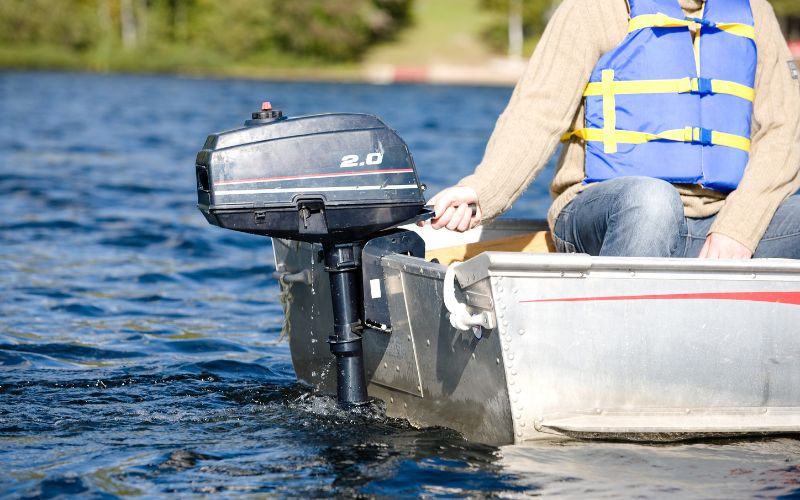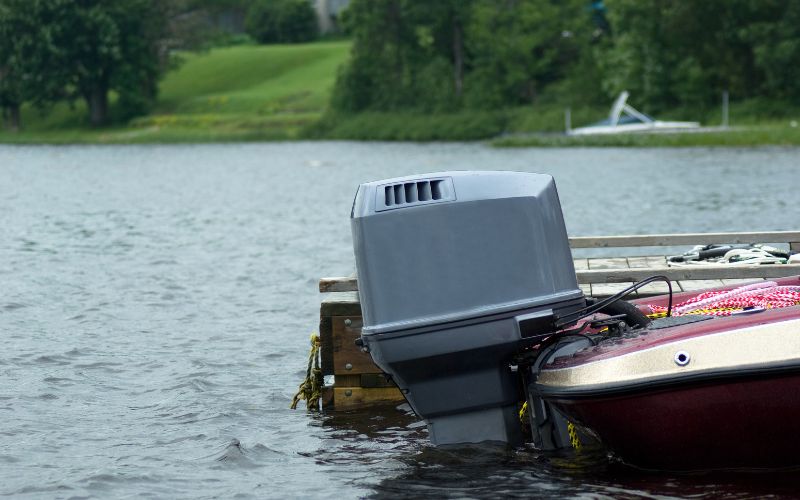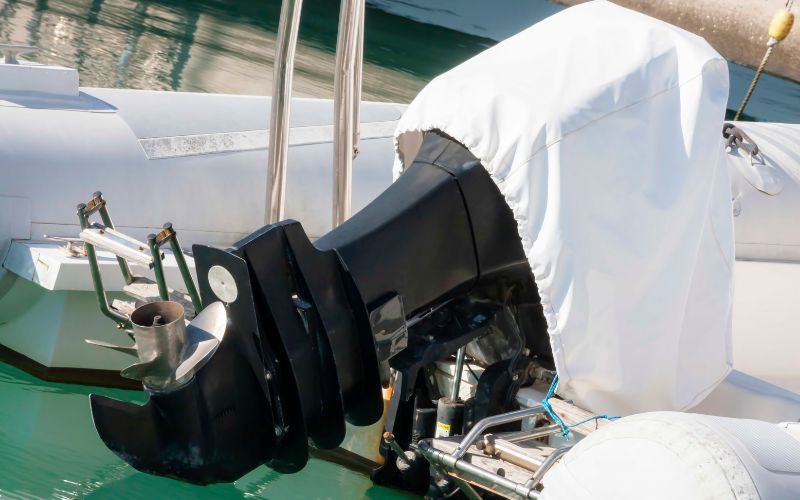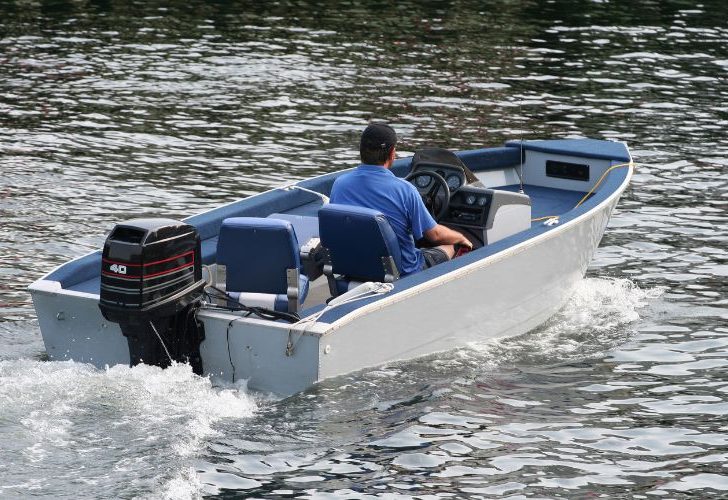There are a lot of things to think about before you hit the water.
If your boat has an outboard motor, or you’re planning to have one installed, one of these considerations is how deep that motor should be in the water.
If the motor is raised to high or lowered too deep, you may run into problems. But how do you determine the right level?
How deep should an outboard motor be in the water?
Your motor should be low enough so that the motor head is completely submerged. All intake points should be underwater, the propeller should be below the level of the transom, and the cavitation plate should be about level with the water’s surface.
Table of Contents
How Deep Should an Outboard Motor Be in the Water?
If you’re new to boating, you may not have thought much about how high or low your motor sits in the water.
At the same time, it’s important to get this right. If your motor sits too low, it puts you at a higher risk of striking underwater objects or being slowed down by the boat’s drag; it may even increase your boat’s draft, or how much of it is under the water’s surface.

Generally speaking, your outboard motor should be low enough to meet the following criteria:
- All intake points should be below the water: on the motor head, you will have a water pump; this must remain below the water’s surface any time the motor is running. There will be other openings and valves on the motor head as well; these should also remain below water.
- The transom should not block the propeller: or, more accurately, the transom should not block the flow of water to the propeller. In other words, the propeller should hang down a little lower than the bottom of the boat so the water can flow to it freely.
- The cavitation plate should be about level with the water’s surface: You want the cavitation plate to be near the water’s surface, no more than a couple of inches above or below.
- The above criteria should be maintained even if the boat is empty or near capacity: You may have to adjust the level of the motor depending on how full or empty your boat is. Each time you go out on the water, make sure the specifications in the above points are maintained.
As you can probably tell from the above list, figuring out the appropriate depth for your outboard motor is not an exact science; it will depend on the design of your boat and your motor, as well as their sizes.
For example, a larger motor with a longer shaft may sit lower in the water, while a smaller motor with a shorter shaft will sit higher.
A relatively large motor on a small boat will definitely hang lower, while the opposite is true for a small motor on a large boat.
Generally speaking, you will want about 16 inches from the transom to the prop if you have a smaller motor; for a larger motor, the distance should be about 21 inches.
Again though, these are only estimates; there are no exact numbers.
How Deep Should a Boat Motor Head Be?
The answer to this question depends on the type of boat and motor you have.
Obviously, the motor head should always be submerged when your outboard is in use. Never run the engine out of the water without using muffs or some other method of pumping water through the motor.
The motor head is where the prop and the water pump are, so it’s important that these components stay underwater. However, if it sits too low, the motor head may run into underwater objects or even scrape the surface of a shallow body of water.

How low you set the motor head will depend on the depth of the water, the potential for running into objects under the surface, the weather conditions, as well as design and size of your boat and motor.
As you can see, there are lots of factors to consider. Follow the general guidelines in the section above, and check the specific recommendations for your motor in your owner’s manual.
It also helps to understand your boat’s draft, or the percentage of its surface that sits below the water line. You can find this number in your boat owner’s manual.
How Long Should a Motor Shaft Be?
Again, it will depend on the size of your boat and motor. You may need a longer shaft (and a bigger motor) for a larger boat; this way the motor head can sit lower in the water and raise the bow, allowing better speed and movement.
With a smaller boat, you’ll want a smaller motor with a shorter shaft; this allows for better speed.
As a general rule of thumb, the shaft should hang down about three inches below the boat’s bottom, but this may vary depending on the boat’s size and style, as well as environmental factors discussed in the section above.
If you’re looking to buy a new outboard motor, check your boat owner’s manual for recommendations on the right size specifications, including shaft length. Standard lengths are 15, 20, and 25 inches, but not all motors come with standard sizes.

Should an Outboard Motor Be Tilted Up or Down?
You may also be wondering what’s the best way to stow your motor while it’s sitting between uses. Should you leave the motor tilted up and out of the water, or is it better to keep it submerged?
As you might imagine, there are pros and cons to both stowing methods.
It’s okay to leave your motor stowed down, with the motor head submerged underwater, if you’re only planning to do so for a short period of time–for example, if you’re going to be using the boat again in a day or two.

You may also want to keep it stowed underwater if you’re worried about someone stealing parts of your motor head. It’s better to stow your motor this way in cooler, freshwater climates, where you’re less likely to run into problems from corrosion and marine build-up.
Speaking of corrosion and build-up, these are the main reasons you shouldn’t stow your motor below the water for long periods of time, especially in warm climates and saltwater environments.
The longer your motor head is underwater, the more likely it is to start rusting or have algae and barnacles build up on the prop and other components.
So, you should stow the motor up and out of the water if you won’t be using it for a long period of time, or if you frequently boat in the ocean or warm climates.

Conclusion
The head of your outboard motor should be completely submerged in the water while you’re using it. The exact depth, however, will be dependent on a multitude of factors. Check your boat owner’s manual for specific recommendations.

Sarah Hood has been writing for Anchor Travel since 2021. When she’s not writing, she enjoys cooking, singing, and spending time in the great outdoors.

